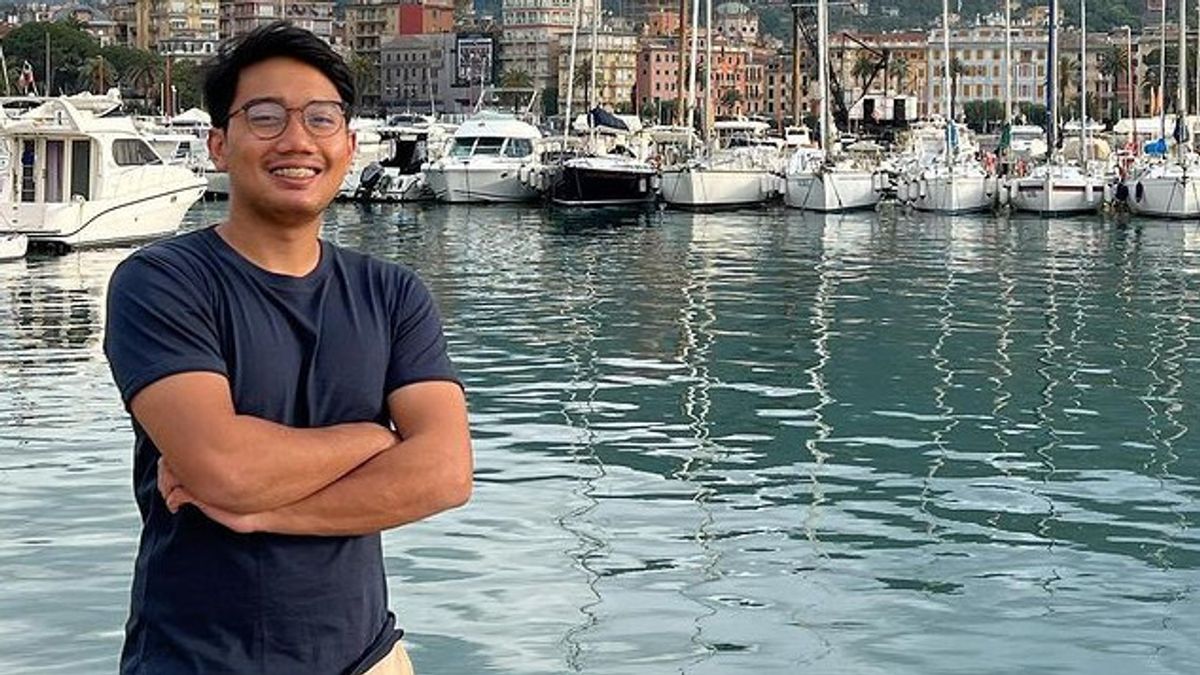JAKARTA - The body of the son of West Java Governor Ridwan Kamil, Emmeril Kahn Mumtadz or better known as Eril, was found on Wednesday, June 8. Eril was found at around 06.50 am Swiss time or at 11.50 pm. The body was found at the Engehalde Dam, Bern, Switzerland.
Ridwan Kamil is very grateful because he is still given the opportunity to hug, caress, bathe, and also recite the call to prayer for his child. On this occasion, Ridwan also gave information that the condition of the child's body was still intact. Even though it has been submerged for 14 days.
In an upload to his Instagram account, Ridwan Kamil explained that the cold temperature of the Aare river made Eril's body still intact because it was half frozen. In addition, not many animals live in the river.
"The scientific explanation of why the body was intact, the Aare River which was as cold as a refrigerator and minimal fauna kept the body half frozen, so that it remained completely intact even though it was on the riverbed for 14 days," he said on his Instagram account @ridwankamil, Friday, June 10.
From the point of view of medical science, such as the interview conducted by VOI with a general practitioner, dr. Vivien Keung, on Friday 10 June. After a person dies, the body undergoes biochemical and physiological changes because the blood circulation, cells, and body tissues no longer work.
So, there are three processes that the body goes through before it undergoes decay or decomposition. Such as a progressive decrease in body temperature until it reaches ambient temperature (algor mortis). This process begins in the first 3 hours, continuing until the body temperature reaches the ambient temperature. Sooner or later depending on body temperature at death and the temperature of the environment.
According to dr.Vivian Keung, there are at least four factors that affect the rapid decrease in body temperature. That is, the body is submerged in water, the body is not wearing clothes, and the body is thin. Meanwhile, the decrease in body temperature will be slower if you die with the condition of the body wearing a lot of clothes and being overweight or obese.
 After experiencing algor mortis, the next decomposition process is livor mortis. Livor mortis is a discoloration of the skin, bruising appears purplish blue or reddish blue. This is because when the heart has stopped beating, blood circulation in the body stops. Then the blood will settle to the lowest part of the body, attracted by the force of gravity.
After experiencing algor mortis, the next decomposition process is livor mortis. Livor mortis is a discoloration of the skin, bruising appears purplish blue or reddish blue. This is because when the heart has stopped beating, blood circulation in the body stops. Then the blood will settle to the lowest part of the body, attracted by the force of gravity.
"So, when the body is supine, the color of the bruises usually appears on the back or lower body area. The formation varies, usually begins to be seen within one hour after death, is clearly formed 3-4 hours or 6-12 hours after death. Then after 12 hours the bruises persisted and did not lose their color,” explained dr. Vivian.
Finally, there is a rigid process in the body or rigor mortis. The body becomes stiff because all the muscles in the body no longer get oxygen so it becomes fuel for muscle cells. This stiffness in the body can appear about 2 hours after death and starts in the small muscles. This stiffness occurs approximately up to 24 hours after death, then disappears within 24-36 hours after death. However, the stiffness of the body will occur longer in cold temperatures.
So, decomposition itself occurs when the tissues in the body begin to disintegrate due to the leakage of enzymes from the cell after death. This makes the body a good environment for microbes to grow in the tissues. The decay time itself can be determined by several factors.
 “There are four factors that cause the decay process to be fast or slow. Namely, climate, location, temperature, and cause of death,” explained dr. Vivian.
“There are four factors that cause the decay process to be fast or slow. Namely, climate, location, temperature, and cause of death,” explained dr. Vivian.
Spoilage tends to occur more quickly in warm or hot climates. Whereas in cold and humid areas, the decay process occurs more slowly.
The location where the body is found also matters, such as in an open or closed space. Corpses exposed to air (on land) decompose faster than those in water or on the ground. Then the animals that live in that location also affect the decomposition time.
Next is temperature. Ideally, the decay time occurs if the temperature is at 20-30 degrees Celsius and is slowed down if it is below 0 degrees Celsius. Lastly, the cause of death. If there is an open wound, then the process of decay can occur more quickly.
For Ridwan Kamil's statement regarding Eril's body which was still intact due to the cold temperature of the Aare River, dr. Vivian agreed. According to him, the cold water temperature can slow down the decomposition process so that the body remains complete.
“Immersion of the body in water is related to the process of decay. Colder water temperatures can slow down the process. Even a body submerged in ice water can slow down the decay process for years," concluded dr. Vivian Keung.
The English, Chinese, Japanese, Arabic, and French versions are automatically generated by the AI. So there may still be inaccuracies in translating, please always see Indonesian as our main language. (system supported by DigitalSiber.id)













